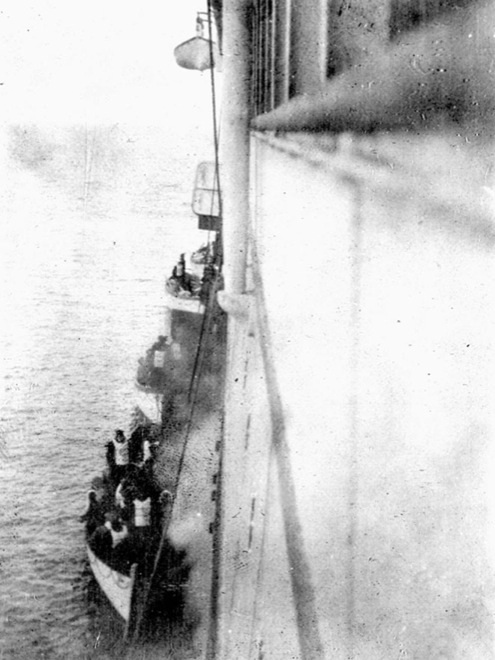More Passengers of the Ship Titanic Could Have Been Saved
Some survivors of Titanic are climbing up to get on board the ship Carpathia (photo from StumbleUpon. Sept. 19,2014)

Some potential rescuers did not receive call for help
Two factors could have saved a lot of the passengers of Titanic from drowning. One, enough or a surplus of lifeboat space, and two, uninterrupted manning of the radio unit.
Novelty
The radio unit in a ship was a novelty. It was one of the inventions of Guglielmo Marconi. It was an application of electromagnetic waves that were first discovered by Michael Faraday.
To recall, Faraday, an English chemist and physicist, discovered electromagnetism. He invented the first dynamo, a device that produces electricity. He formulated laws of electricity.
Clerck Maxwell converted Faraday's laws into mathematical formula. He added some formula of his own. Derived from the combined Faraday and Maxwell formula, Maxwell predicted that electromagnetism produced in one place can be replicated in another place through space (Campbell, N. What Is Science?. 1921). That is, without a medium like ether. However, Maxwell did not have the device to test his prediction.
Eight years after Maxwell made his prediction, Heinrich Hertz came up with a device, the coherer. Hertz found the prediction true.
Marconi was fascinated by electromagnetism and Hertz's coherer. He improved upon it. However, his father did not approve of his fascination with science. When support for his hobby in Italy (his father was an Italian, his mother an Irish) was exhausted Marconi went to London, England where his uncle was employed in an electric company. There Marconi went on with his experiments to find ways by which he could extend the reach of electromagnetic waves to far distances. He was able to produce electromagnetic waves that were transmitted and received over the Atlantic ocean.
One of Marconi's inventions is transmission of radio waves to ships at sea. By Morse code, a radio unit in a ship could receive messages. So ocean-going ships were equipped with radio units. However, this device was a novelty that it was not always attended to.
In 1908, two passenger ships collided in the Atlantic ocean. The crew of other ships, responding to call for help through the radio rescued 1,700 lives (Goldsmith, M. Guglielmo Marconi. 2003).
The Titanic, a luxury ship as tall as a ten-story building, was supposed to be unsinkable. On its maiden voyage from England to New York City on April 14,1912, it hit an iceberg and split across its middle. In two hours and forty minutes the Titanic sunk.
A ship nearby had a radio unit but its crew did not attend to it. The crew did not receive Titanic's call for help. One reason for neglecting the radio could be that it was a novelty. Another ship, the Carpathia, about 90 kilometers away, received the call and arrived at the shipwreck site two hours after the Titanic had sunk. Some passengers were rescued but 1,513 of them drowned (Goldsmith, M. Guglielmo Marconi. 2003:28).
The Titanic had 2,224 passengers. Its lifeboat space was good for only 1,178 people (Encyclopedia Britannica 2009).
New entries as of October 20,2011
Another ship, the S.S. California, came over to the rescue of the Titanic. She made it to the shipwreck site after the arrival of the ship Carpathia. Pictures of it were taken by someone aboard the Carpathia.





